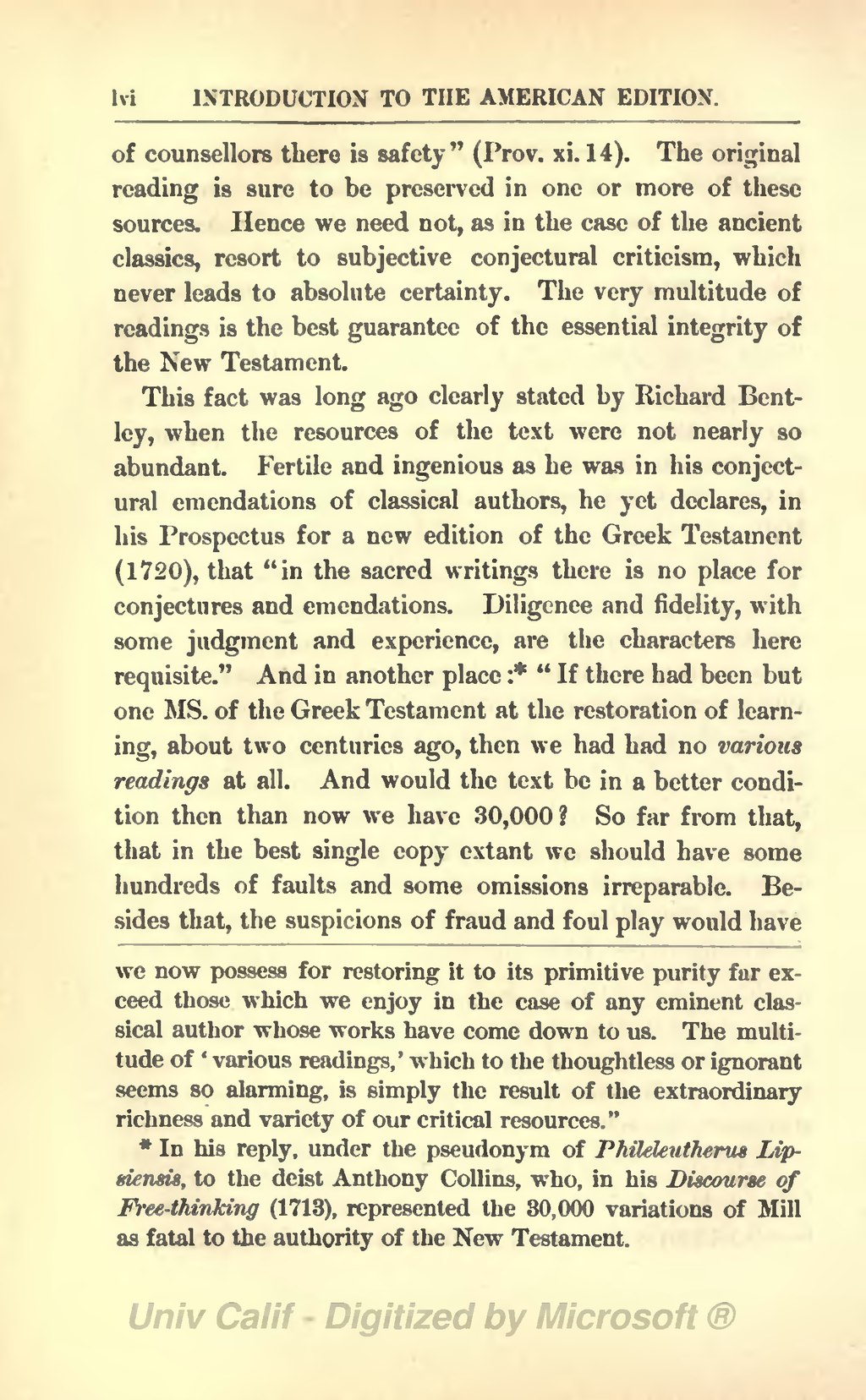Ivi INTRODUCTION TO THE AMERICAN EDITION.
of counsellors there is safety" (Prov. xi. 14). The original reading is sure to be preserved in one or more of these sources. Hence we need not, as in the case of the ancient classics, resort to subjective conjectural criticism, which never leads to absolute certainty. The very multitude of readings is the best guarantee of the essential integrity of the New Testament.
This fact was long ago clearly stated by Richard Bent- ley, when the resources of the text were not nearly so abundant. Fertile and ingenious as he was in his conject- ural emendations of classical authors, he yet declares, in his Prospectus for a new edition of the Greek Testament (1720), that "in the sacred writings there is no place for conjectures and emendations. Diligence and fidelity, with some judgment and experience, are the characters here requisite." And in another place :* " If there had been but one MS. of the Greek Testament at the restoration of learn- ing, about two centuries ago, then we had had no various readings at all. And would the text be in a better condi- tion then than now we have 30,000 ? So far from that, that in the best single copy extant we should have some hundreds of faults and some omissions irreparable. Be- sides that, the suspicions of fraud and foul play would have
we now possess for restoring it to its primitive purity far ex- ceed those which we enjoy in the case of any eminent clas- sical author whose works have come down to us. The multi- tude of ' various readings,' which to the thoughtless or ignorant seems so alarming, is simply the result of the extraordinary richness and variety of our critical resources."
- In his reply, under the pseudonym of Phileleutherus Lip-
- icnsi#, to the deist Anthony Collins, who, in his Discourse of
Free-thinking (1713), represented the 30,000 variations of Mill as fatal to the authority of the New Testament.
�� �

